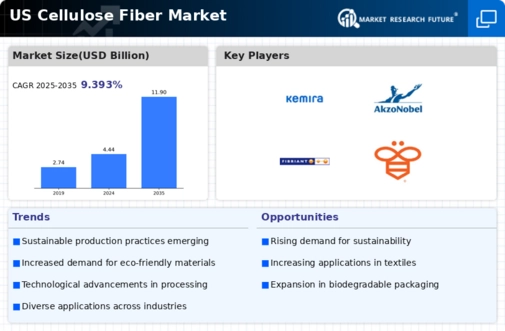The US Cellulose Fiber Market has witnessed significant competition driven by the increasing demand for sustainable materials across various sectors, including textiles and construction. The trend toward eco-friendly products, alongside the push for innovation in fiber technology, has intensified the rivalry among manufacturers. Companies are focusing on integrating sustainability into their production processes while also investing in advancing their product offerings to adhere to evolving consumer preferences.
The market dynamics are influenced by factors such as pricing, quality, and brand reputation, with players seeking ways to enhance their supply chain efficiency to capture a larger share of this burgeoning market.
Lenzing AG
Lenzing AG has established a formidable presence in the US Cellulose Fiber Market through its innovation and commitment to sustainability. As a leader in the production of man-made cellulose fibers, the company has developed a diverse portfolio that includes high-quality fibers ideal for various applications, from apparel to home textiles.
Lenzing AG leverages its advanced manufacturing techniques to produce fibers that are both biodegradable and derived from renewable sources, aligning with the growing environmental consciousness among consumers. The company's strong emphasis on R&D allows it to remain at the forefront of fiber technology, continuously improving product features to meet specific requirements of the US market, thus fortifying its competitive edge in this sector.
Recylon
Recylon is recognized for its strategic initiatives within the US Cellulose Fiber Market, offering a range of products that emphasize sustainability and performance. The company provides high-quality cellulose fibers that cater to the needs of various industries, including textiles and nonwoven applications. Recylon has established robust partnerships and collaborations, enhancing its market presence and securing a notable position among key players in the industry.
The company's strengths lie in its innovative approach, focusing on developing fibers that contribute to reducing the ecological footprint while maintaining superior functionality. Additionally, Recylon's strategic mergers and acquisitions have bolstered its capabilities and expanded its reach within the region, enabling it to respond effectively to market demands and consumer preferences while reinforcing its role as a significant contributor in the cellulose fiber landscape of the US.














